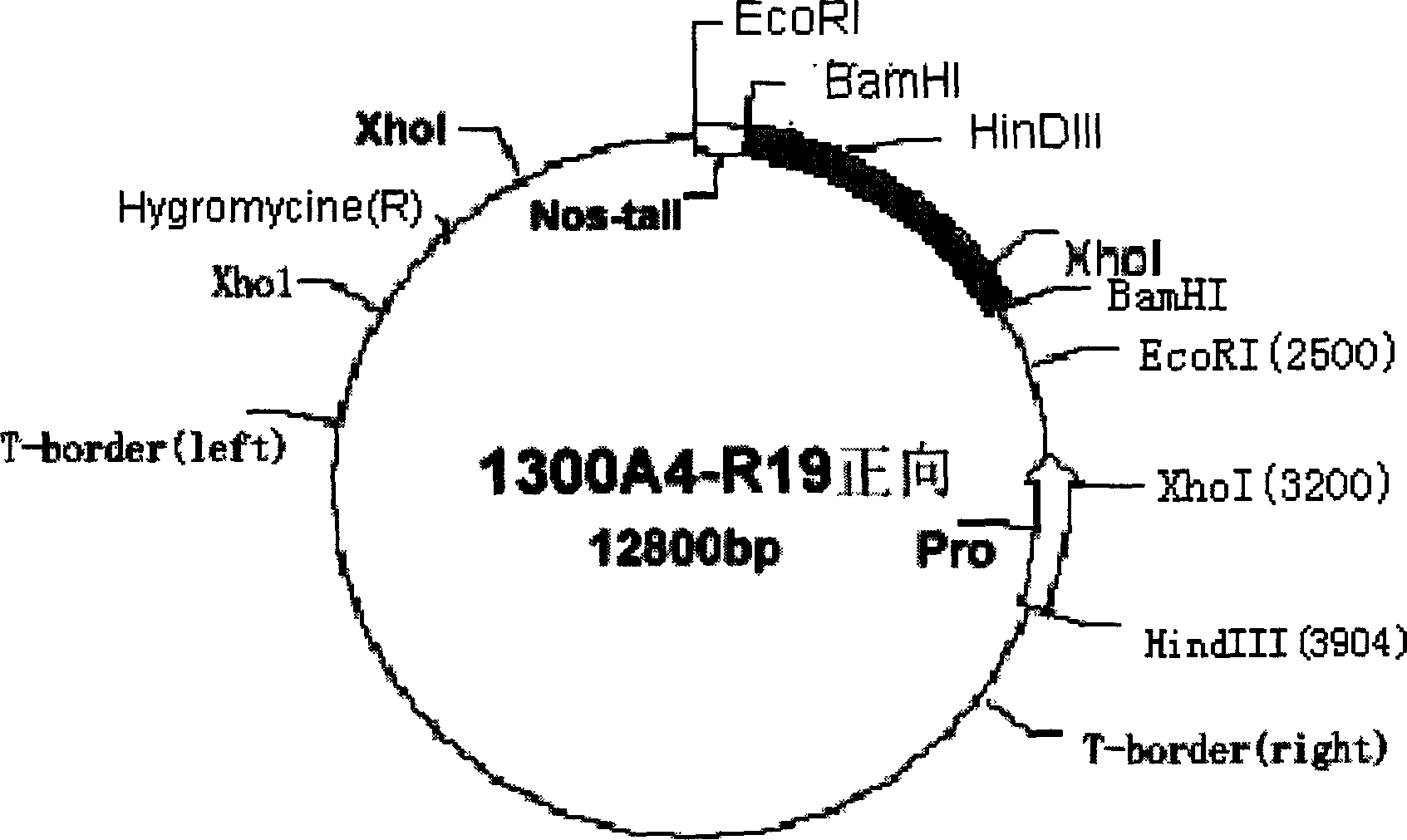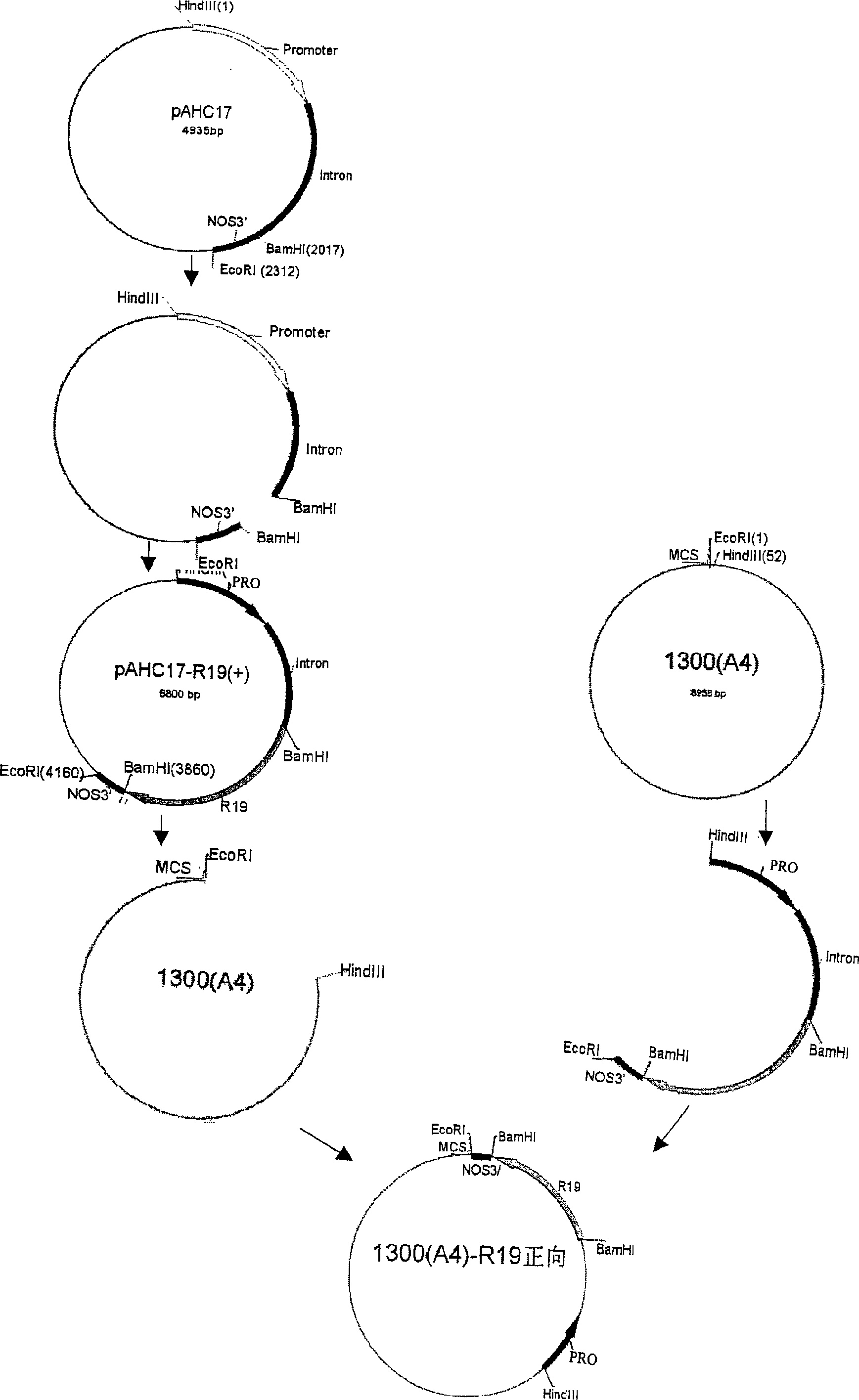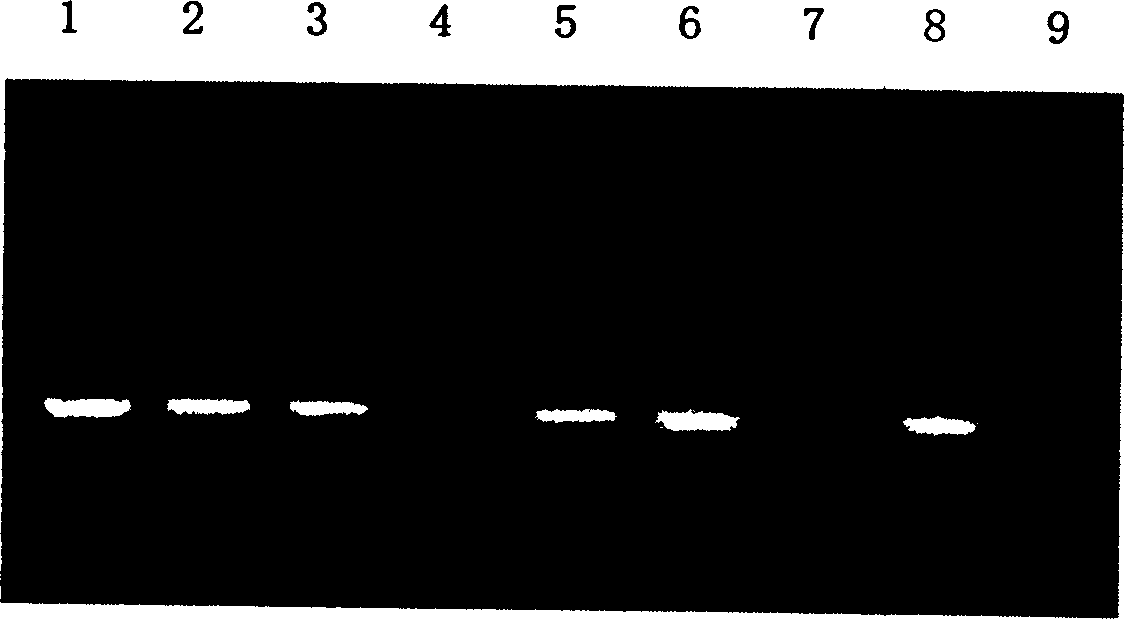Method for preparing transgene using rice calmodulin binding protein kinase gene and its use
A protein kinase gene and binding protein technology, which is applied to the application field of calmodulin-binding protein kinase gene in transgenic rice, can solve problems such as difficulty, increase thousand-grain weight, increase farmer's labor intensity, etc., so as to prolong the growth period and increase the yield. Effect
- Summary
- Abstract
- Description
- Claims
- Application Information
AI Technical Summary
Problems solved by technology
Method used
Image
Examples
Embodiment 1
[0024] Example 1: Construction of expression vector containing calmodulin-binding protein kinase gene
[0025] according to figure 1 with figure 2 As shown, two primers were used in this experiment, and their nucleic acid sequences were RF5 (5'-cgggatccatgggtctctgccatggcaag-3') and RF3 (5'cgggatcctcaggtttttgggatggtacgc-3'). Using RF5 / RF3 as the primer combination, using the pET32a+ vector cloned with the calmodulin-binding protein kinase gene as the template DNA, by PCR (94 degrees Celsius for 53 minutes, 94 degrees Celsius for 1 minute, 65 degrees Celsius for 50 seconds, 72 degrees Celsius for 1 minute30s, 30 cycles, 72 degrees Celsius for 10 minutes ) to synthesize and obtain the full-length OsCBK (Oryza sativa calcium / calmodulin-bindingprotein) of the full-length rice calmodulin-binding protein kinase gene. The intermediate vector plasmid pAHC17 was digested with the restriction endonuclease BamHI at 37 degrees Celsius to obtain pAHC17 / c , and at the same time clone the...
Embodiment 2
[0026] Example 2: Transformation and screening of plants containing calmodulin-binding protein kinase gene
[0027] 1. Preparation of Competent Agrobacterium
[0028] Put Agrobacterium EHA105 on the YM plate, culture at 26-28°C for 48 hours, pick a single colony and inoculate it into 40ml of YM liquid medium, culture it in suspension at 250rpm for about 12-16 hours, and then transfer the bacterial solution to the sterilized medium on the ultra-clean bench. In a sterile 50ml centrifuge tube, centrifuge at 4°C, 8000rpm for 8 minutes, discard the supernatant, resuspend Agrobacterium with 100mM NaCl (pre-cooled at 4°C), centrifuge at 4°C, 8000rpm for 8 minutes, discard the supernatant, and add the original bacteria 1 / 50 volume (800 μl) of 20 mM CaCl2 to resuspend the bacteria, and aliquot into 100 μl / tube. (The competent Agrobacterium at this time can be directly used for transformation), or placed in liquid nitrogen for 10 seconds, and stored in a -20°C or -80°C ice box for futu...
Embodiment 3
[0033] Example 3: Nucleic acid analysis of transformed plants containing calmodulin-binding protein kinase gene
[0034] 1. Extraction of total DNA from transformed plants for PCR
[0035] according to image 3 As shown, scrub the leaves with 70% ethanol, weigh 100mg, add 600μl extraction buffer (0.2MNaCl, 25mM EDTA, 0.5% SDS, pH 7.5), grind quickly at room temperature, and vortex mix in a 1.5ml Eppendorf tube for 5- Centrifuge at 12000 rpm for 20 seconds at room temperature for 25 minutes. Add an equal volume of isopropanol to the supernatant, and mix by inverting up and down. Precipitation overnight at -20°C, at room temperature, 12000 rpm, 15 minutes. Discard the supernatant, put it upside down on absorbent paper, and then add 200 μl of 70% ethanol to soak and wash the DNA precipitate, at room temperature, 12000 rpm, for 10 minutes. Discard the ethanol, invert it on a paper towel and add 100 μl TE (pH 7.5) to dissolve the precipitate after it dries. The DNA concentrati...
PUM
 Login to View More
Login to View More Abstract
Description
Claims
Application Information
 Login to View More
Login to View More - R&D
- Intellectual Property
- Life Sciences
- Materials
- Tech Scout
- Unparalleled Data Quality
- Higher Quality Content
- 60% Fewer Hallucinations
Browse by: Latest US Patents, China's latest patents, Technical Efficacy Thesaurus, Application Domain, Technology Topic, Popular Technical Reports.
© 2025 PatSnap. All rights reserved.Legal|Privacy policy|Modern Slavery Act Transparency Statement|Sitemap|About US| Contact US: help@patsnap.com



